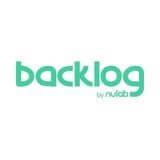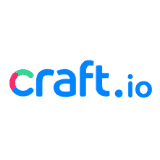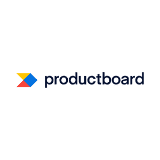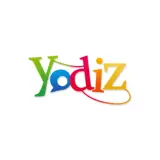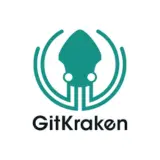- Free Version: Available for teams of up to 10
- Pricing: Premium plan $24/month (with a free 30-day trial period)
- Platforms supported: Available on mobile app (iOS and Android) or a web-based software
Why use SafetyCulture?
SafetyCulture allows managers to create workflows for handling backlogs, tracking progress, and documenting each backlog to ensure nothing gets left behind. It offers mobile capabilities for Scrum and Agile methodologies and facilitates communication, making it much easier to stay on top of backlogs. It even allows managers to send announcements of backlogs and check who’s viewed the message, creating more transparency.
Features:
- Use operational data from previous process checks to discover critical tasks that need to be taken care of
- Create a common understanding of what needs to be done by documenting each backlog item and maintaining transparency
- Create workflows for handing backlogs with automated reminders to ensure that everyone has the information they need with appropriate priority levels
- Track the backlogs of each employee and filter out information you don’t need
- Enhance cross-functional collaboration by integrating the platform with existing tools
Why use Quickbase?
Quickbase is designed to manage complex projects and excels at backlog management. The platform offers robust customization for teams looking for tailored solutions in their backlog management process.
Features:
- Workflow automation for efficiency
- Role-based access controls for data security
- Real-time collaboration and notifications
- Free Version: None
- Pricing: Starts at $35/user/month, billed annually (with a free 30-day trial period)
- Platforms supported: Web, iOS, Android
Why use Backlog?
This is a comprehensive project management platform that excels in tracking and managing backlogs for simple and complex projects. It features a user-friendly interface and features tailored for software development teams emphasizing collaboration and transparency.
Features:
- Burndown charts
- Task hierarchy
- Versions and milestones
- Free Version: Yes, available for up to 10 users.
- Pricing: Starts at $35/month (with a free 30-day trial period)
- Platforms supported: Web, iOS, Android
Why use Craft.io?
Craft.io is great for team alignment and comes with a great set of tools that streamline the backlog management process. It’s also great for idea prioritization and product roadmapping, making it a top choice for product-centric teams.
Features:
- Spec editor
- Product backlog
- Product hierarchy and story mapping
- Free Version: None
- Pricing: Starts at $19/editor/month, billed annually (with a free 14-day trial period)
- Platforms supported: Web
Why use Productboard?
Productboard excels at task prioritization, which is why it can help companies avoid backlogs and manage them effectively when they do happen. It also handles customer feedback and product planning—all accessible via a web browser.
Features:
- Product roadmap planning and visualization.
- Integration with various customer communication channels.
- Collaboration on product features and initiatives
- Free Version: None
- Pricing: Starts at $19/maker/month, billed annually (with a free 15-day trial period)
- Platforms supported: Web
Why use Yodiz?
Yodiz is made to simplify the planning process, which is why the platform is adept at spotting and managing backlogs for various industries. It also includes sprint planning and collaboration features, making it an excellent choice for Agile development teams.
Features:
- Sprint planning and tracking
- Release management for product delivery
- Collaboration with comments and attachments
- Free Version: Yes, available for up to 3 users.
- Pricing: Starts at $3/month/user (with a free 30-day trial period)
- Platforms supported: Web, iOS, Android
Why use GitKraken?
GitKraken is a scrum software designed for development teams that need extra help managing their project backlogs. It’s suitable for teams looking for a comprehensive solution with a focus on Agile methodologies.
Features:
- Release planning and tracking
- Automation for repetitive tasks
- Collaboration with comments and mentions
- Free Version: None
- Pricing: Starts at $105/month, billed annually (with a free 14-day trial period)
- Platforms supported: Web, Desktop
What are Backlog Management Tools?
Backlog management tools are platforms that help managers create organized, prioritized, and trackable task lists. That way, they account for all backlogs and set the appropriate priorities for each task. This prevents backlogs from delaying product development and ensures that the team stays on track. It assists teams in maintaining a clear and structured list of work items, ensuring that the most important tasks are prioritized and visible to team members.
Importance
Backlog management tools can transform the way teams manage tasks as a whole, especially those following methodologies like Agile. Here are a few of the benefits these tools have to offer:
- Enhanced Organization: Teams can categorize tasks, making it easier to locate, prioritize, and address pending work.
- Improved Prioritization: They enable teams to assign importance levels, ensuring critical tasks take precedence.
- Efficient Workflow: Team members can view, update, and collaborate on tasks in real-time, fostering a more efficient work environment.
- Enhanced Communication: Backlog management tools provide a centralized platform for communication, reducing the chances of information gaps.
- Detailed Tracking: Teams can monitor each step of a project or sprint, identify bottlenecks, and make informed decisions for smoother operations.
Key Features
While organizations should choose backlog management tools according to the organization’s unique needs, there are some must-have features when selecting these tools. Here are some of the key features of backlog management tools:
- Task Categorization
- Priority Setting
- Collaboration Tools
- Communication Channels
- Document Sharing
- Customizable Workflows
- Progress Tracking
- Real-time Updates
- Filtering and Search
Choosing the Right Software
Choosing the right tool can really make a big difference for your team’s productivity and the success of your project. Here’s a curated list of the top 10 backlog management tools to help you make an informed decision:
| Backlog Management Tools | Free Version | Paid Plan | Mobile App |
| SafetyCulture | Yes | $24/user/month* | Yes |
| Quickbase | No | $35/user/month* | Yes |
| Backlog | Yes | $35/month | Yes |
| Craft.io | No | $19/editor/month* | No |
| Productboard | No | $19/maker/month* | No |
| Yodiz | Yes | $3/month/user | Yes |
| GitKraken | No | $105/month* | Yes |
* billed annually

